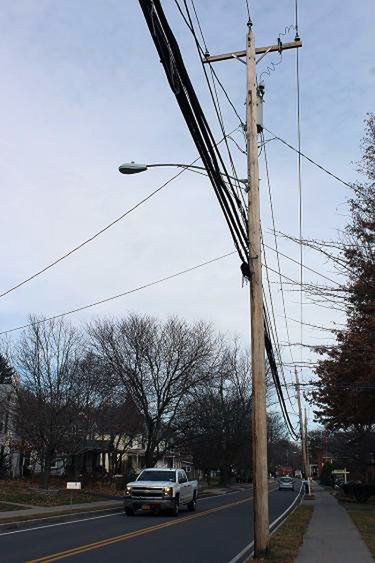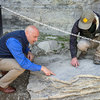New Scotland pursues funding for clean-energy projects
NEW SCOTLAND – The town board at a special meeting on Wednesday, June 9, discussed possible clean energy projects that it would undertake were it to receive an $80,000 grant from the New York State Energy Research and Development Authority.
The Clean Energy Communities Program from NYSERDA helps local governments to use clean energy, save on costs, and improve the environment.
The town has yet to apply for the grant, and the proposed clean-energy projects would be included on the application to NYSERDA, town Supervisor Douglas LaGrange told The Enterprise this week.
While the board hasn’t made any definitive choices, Councilman Adam Greenberg told The Enterprise this week, there is some consensus for splitting the grant among a few different projects: roofing for the Hilton Barn; light-emitting-diode streetlights; and variable-frequency drive motors for pumps in a water district.
A request for proposals, Greenberg said, asked contractors to include prices for replacing the barn’s roof with slate, faux slate, or shingles as well for insulating the roof with varying thicknesses of insulation.
The town saved the century-old barn from demolition for a housing development by moving it across Route 85A.
Some of the grant money could help pay for a portion of the cost to swap the town’s old street lights with new LED lighting. New Scotland has partnered with the villages of Altamont and Voorheesville as well as the town of Guilderland to increase its buying power, driving down the cost of purchasing LED streetlights.
LaGrange said that the town is also exploring a program from the New York Power Authority that would allow it to borrow money at a 1-percent interest rate in order to pay for new LED lighting.
The water-pump motors in the Swift Road Water District would replaced with motors with variable-frequency drive. A VFD is able to adjust the speed of an electric motor by regulating the power that is being delivered to that motor.
Variable-frequency drives reduce energy and maintenance costs. LaGrange said a VFD would prevent the Swift Road pumps from coming on at full power and, he hopes, prevent blowouts in weakened points of the infrastructure. The other water districts, LaGrange said, either have them already or are they not necessary.
High-impact actions
In order to be eligible just to apply for the grant, LaGrange said, the town had to become a Clean Energy Community by completing four of 10 “high-impact actions”:
– Benchmarking: This requires the town to report annually the energy used in its municipal buildings. “It’s important because buildings account for over 60 percent of the energy used in New York State,” according to NYSERDA. Over time, benchmarking would allow New Scotland to compare usage against other buildings, and identify opportunities to cut energy waste;
– Passing a “Unified Solar Permit”: This standardized permit application streamlines the approval process for installing solar arrays in town, Greenberg said;
– Clean Fleet: New Scotland installed an electric-vehicle charging station at town hall; and
– Energy-code enforcement training: Jeremy Cramer, the town’s code enforcement officer, received training on the state’s energy code, the minimum building standard for energy efficiency. The code, according to NYSERDA, “is a complex document and one of nine building codes in New York State, making implementation and enforcement complex and time consuming.”
Qualifying for funds
To obtain grant funding for the proposed clean-energy projects, Greenberg said, each project has to meet five selection criteria.
According to NYSERDA, an application is evaluated based on the selection criteria, “with a total number of possible points allocated to each, as well as compliance with the minimum performance requirements.”
New Scotland’s proposed projects would have to earn a minimum of 60 percent of the selection criteria points in order to be considered eligible. The town would have to:
– Present a thorough, sound, and detailed approach for completing the proposed projects within a reasonable timeframe (25 possible points);
– Show the impact that the projects would have on energy use and greenhouse gas emissions (30 possible points);
– Illustrate efforts would be made “to collaborate with other municipalities and to transfer knowledge to the broader region and state” (15 possible points);
– Show the proposed projects “involve an innovative and/or replicable approach” (15 possible points); and
– Say to what extent the proposed projects would “leverage public and private dollars and/or generate economic development benefits.” (15 possible points)
LaGrange said the town has to apply for the grant before Aug. 2.



